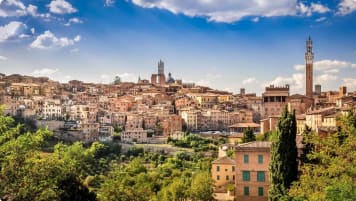Rome, Italy
Explore the sights and wonders of Rome, the eternal city. Heart of an ancient empire, and capital of the Italian Republic. Odyssey offers small group tours for mature and senior travellers couples and solo travelers to Rome and Italy.
11 Nov 20 · 11 mins read
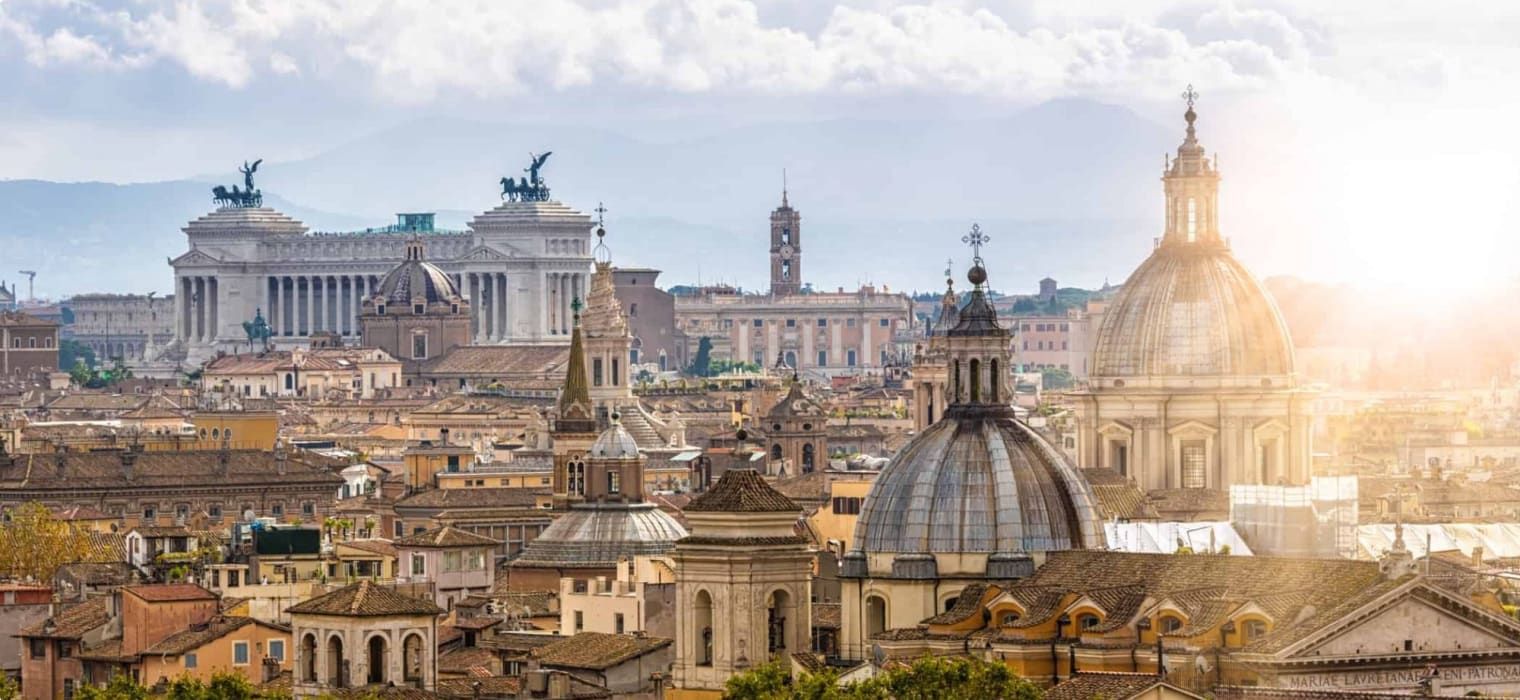
Rome, Italy
Rome is the capital, and largest metropolitan city of Italy, with a population of roughly 4.3 million. Standing upon the banks of the Tiber River, and at the foot of the Palatine hill, Rome is known as the ‘eternal city‘, being at the heart of a classical superpower than indelibly shaped the face of western civilization, both in antiquity, and today. The legacy of the city of Rome, in culture, spirituality, law, architecture, and idealism can be felt today, with the name of the city itself evoking a powerful ideal. It is this interrelationship between the reality and ideality of ‘Rome’ that has cemented its place both within the space of the city, and across the imagination of the western world. Rome is a historic city, dotted with monuments and vestiges of its storied history, from its time as a superpower of antiquity, through its millennia as the seat of the Catholic Church, till its place today as the seat of the Italian Republic.
Ancient Rome
Settlement in the area surrounding the Palatine hill dates back as far as 14,000 years ago, though evidence of urban development does not appear till much later, around the eighth century B.C. It is believed that around this time, a number of smaller villages collectively merged together around the locus of the Palatine hill, with the productivity gains from organised agriculture allowing for the expansion of activities away from subsistence farming, to other activities. The founding of Rome in legend, however, follows a different story. This version harkens back to a story of two mythical brothers, Romulus and Remus. In Roman history, these two brothers were the sons of Mars, the god of war. Left on the banks of the Tiber river after their birth, the two brothers were raised by a she-wolf in her lair or ‘Lupercal’ just beneath the Palatine hill. As they grew they both became natural leaders, and decided to found a city of their own. Romulus chose the Palatine as the site of the city, while Remus chose the Aventine hill nearby, in the ensuing dispute Romulus killed his brother and the city was founded in place.
From around the eighth century B.C till roughly the 5th century A.D, this period marked the ascendancy of Rome as the heart of a classical superpower. The city itself grew to a size of about 1.2 million inhabitants during its peak in the second century A.D, the largest city in the world at the time, and a figure which would not be surpassed until London in the 19th century. It is during this time that some of the landmarks still visible in Rome today were constructed, such as the Colosseum, the Pantheon, the Roman Forum, Trajan’s column, and the Circus Maximus.
For a more in depth account Ancient Rome, take a look at some of Odyssey’s other articles on this topic:
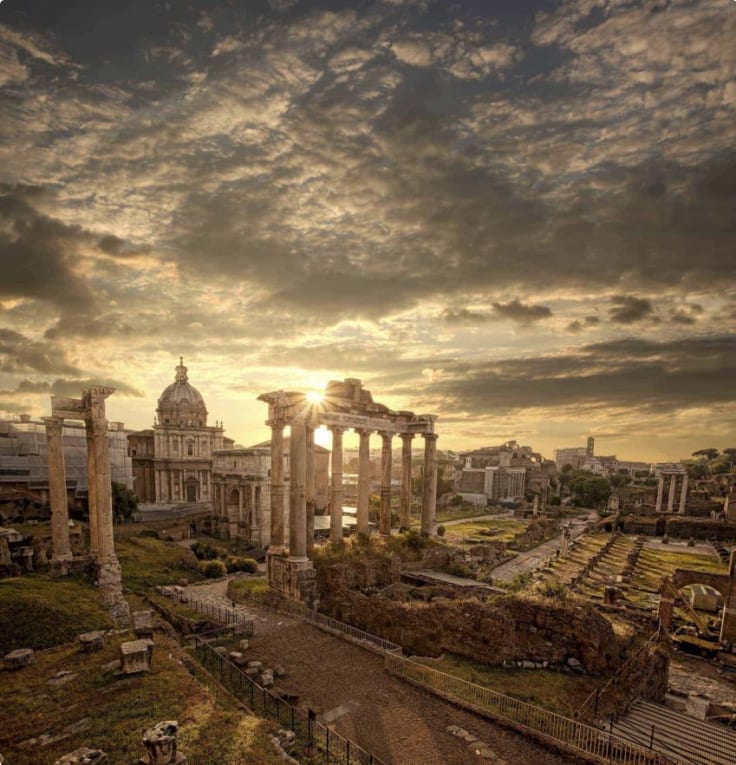
Early Modern Rome
Following the decline of the Western Roman Empire, the city of Rome was devastated by a series of sackings. With the population standing at only 30,000 in the mid 6th century A.D, devastated by the Gothic War. Despite being reclaimed by the Eastern Roman, or Byzantine Empire in the subsequent centuries, and recovering to a degree, from this period onwards the power of Rome rested increasingly in the hands of the Bishop of Rome, later coming to be known as the Pope. The power of the papacy continued to grow, and from the 8th century onwards the city of Rome rested in the hands of the Papal States, who would come to define the geography of the city for the next millennia.
The early modern period was one in which the city of Rome was famous for its most extravagant wealth, and marked the apogee of power for the Papal States. During this time, the church was notorious for its flagrant excesses, with numerous popes and cardinals fathering children, as well as engaging in bribery and nepotism; this in turn was one of the reasons for the growth of the reformation movement which would come to sweep across Europe in the ensuing centuries. Despite this period’s shortcomings, it was also at this point that the Italian Renaissance was most prevalent in Rome, with the patronage of architects, and artists defining the new face of the city. During this time the new St Peter’s Basilica was constructed, curiously using much of the marble of the Colosseum in its construction, and artists such as Michelangelo, Raphael, and Botticelli created timeless works of art; such as the Pietà, the Birth of Venus, or the frescoes upon the newly constructed Sistine Chapel.
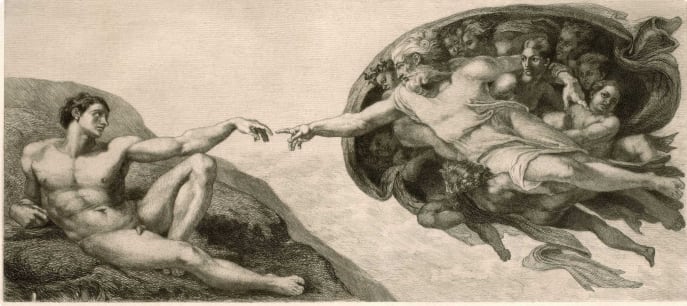
Late Modern to Present History
As the 18th century came to a close, the power of the Papacy was greatly diminished. New ideals such as Republicanism, Nationalism, and the Enlightenment were changing the face of Europe, and Rome with it. The first incidence of this clash came in 1798 with Napoleon taking the city and establishing for a brief time a succession of client states between 1798 and 1814. Although the Papal States were reinstated following Napoleon’s defeat, the ideas spawned by the French Revolution would ultimately spell the end for Rome’s time under the Papal States. As revolutions swept across Europe in 1848, Italian nationalists, led by figures such as Giuseppe Mazzini, and Giuseppe Garibaldi, proclaimed a new Roman Republic after taking the city. Although French troops later recaptured the city for the Papal States, their departure following the outbreak of the 1870 Franco-Prussian war marked the final end of Rome’s time under the Papacy, which was formalised as capital of the Kingdom of Italy in 1871.
The Kingdom of Italy persisted until the year 1926, with fascist dictator Benito Mussolini dissolving democratic institutions and declaring an Italian Empire, it is interesting to note that it is not until this period that Rome’s population once again reached the levels seen during the classical era, some 1700 years prior. During Mussolini’s dictatorship Rome’s architecture was reshaped once more, with wide swathes of the city remodelled into wider and more open spaces, valorising the glories past of Ancient Rome. One notable landmark from this period is the Victor Emmanuel II monument. Commissioned in 1885, and completed in 1935, it lies as the centrepiece of the Piazza Venezia, and venerates the Italian unification under its first king. Following the defeat of European fascism in 1945, Italy was reorganised into the Italian Republic, which persists until this day.
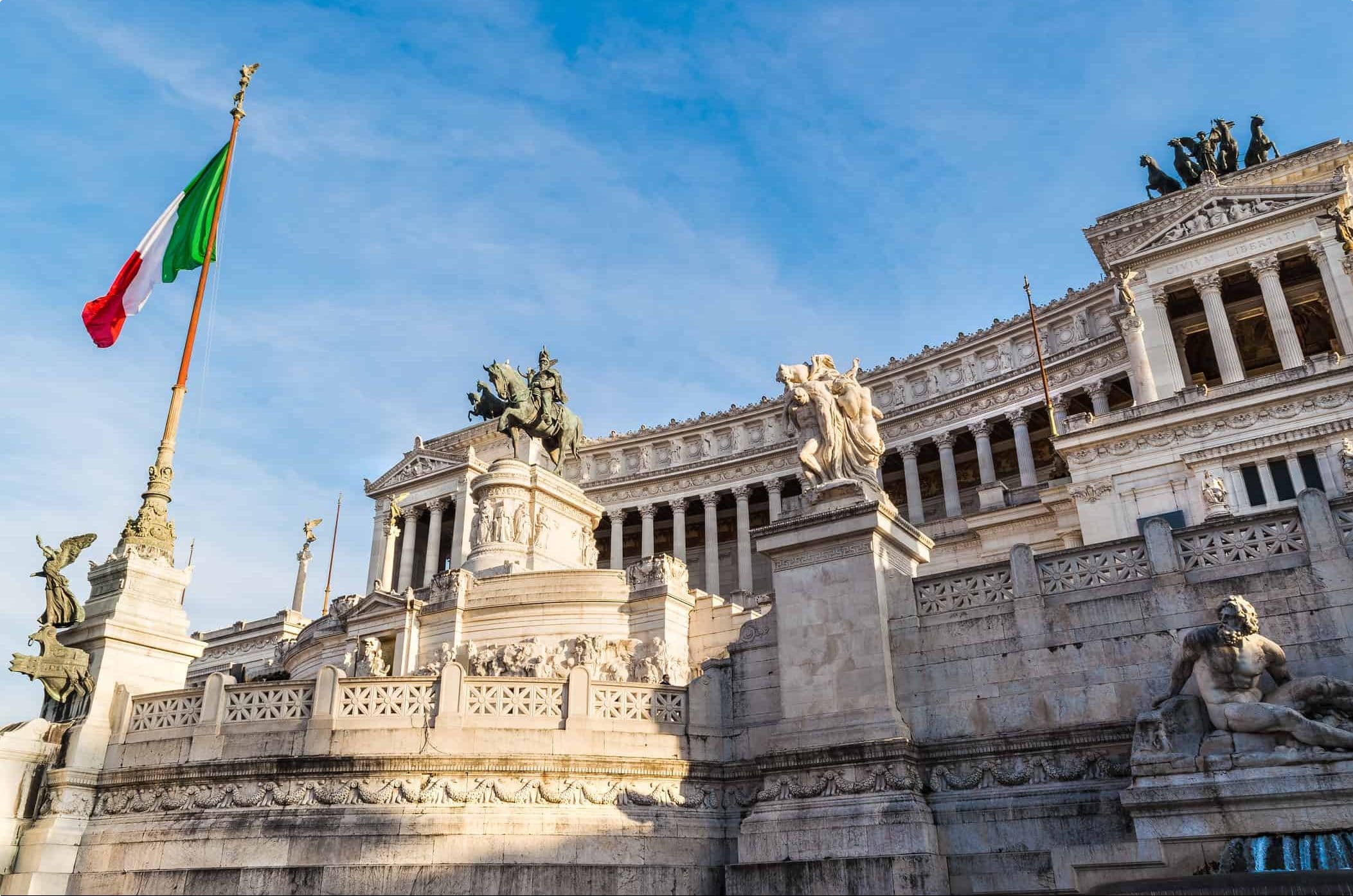
City Highlights
Rome’s long and storied history makes for an unforgettable experience, with each of Rome’s uncountable landmarks and buildings steeped in the rich heritage of thousands of years. To this end, one of the best ways to experience what Rome has to offer is through a small group tour. Odyssey specialises in this kind of tour, offering an engaging and intimate tour of Rome that highlights what the city has to offer. Whether in a small group tour, or just enjoying a walk around the city stopping for occasional coffee or gelato, these are some of attractions you won’t want to miss.
St Peter’s Basilica & the Vatican Museum
St Peter’s Basilica is the largest, and one of the most important churches in all of Christendom. Standing at the heart of the tiny nation of Vatican city, the Basilica is a famous world heritage site, covering an area of over 15,000 square meters (21,000 including grounds). The Basilica features an iconic dome designed by successive architects, including Michelangelo, and remains one of the largest in the world today. Today’s Basilica is built over the site of an older one, constructed in the fourth century by the Roman Emperor Constantine. This church fell into disrepair during the period of the Avignon papacy, and was later reconstructed as the edifice we know today during the 16th century. The church itself is said the be built upon the site of the tomb of St Peter, one of Jesus’ leading apostles, who was martyred by Emperor Nero during his reign over the Roman Empire. The Basilica is one of the most visited sites in all of Rome, and the great piazza in front of the basilica regularly draws tens of thousands for the Pope’s liturgies.
Tip: for a magical view of St Peter’s Basilica, make your way to the Piazza Cavalieri Di Malta on Aventine Hill and take a peek through the keyhole.
Alongside the Basilica is another of the Vatican’s main attractions, namely the Vatican Museum. No Vatican tour is complete without exploring its museums, which houses a collection of treasures and art numbering over 70,000, and dating back several millennia. The Vatican museum is the third most visited museum in the world, with almost 7 million visitors annually, and housing artwork from eminent artists such as Leonardo da Vinci, Michelangelo, Raphael, Caravaggio, Titian and more. At the end of a Vatican tour, you’ll also have a chance to see the iconic Sistine Chapel, which is used today as the site of the Papal enclave, and features famous frescoes such as ‘The Creation of Adam’, ‘The Last Judgement’, and many more.
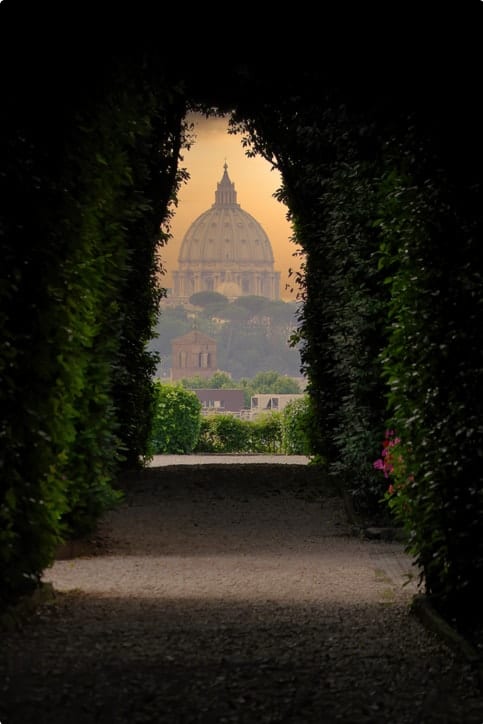
The Colosseum
No tour of Rome is complete without seeing Rome’s iconic Colosseum. As one of Rome’s most identifiable landmarks, a Colosseum tour is a visible reminder of the sheer scale of the massive empire that once called the city its home. Built in the first century AD by the Emperor Vespasian, and his successor Titus, the Colosseum was a massive arena used for spectacles such as gladiatorial combat, staged hunts, dramatic theatre, and battle re-enactments. Interestingly enough, the Colosseum’s name is not derived from the edifice itself, which was originally called the ‘Flavian Amphitheatre’, but for a now missing statue called the ‘Colossus of Nero’, which once stood nearby it. In later years the Colosseum would be used for numerous other functions, such as marketplaces, housing, or as a home for religious orders. It was also famously used as a makeshift quarry in the 16th century, with the Colosseum’s stone being used in the construction of St Peter’s Basilica. The Colosseum’s construction was amazingly complex for its time, with a vast labyrinth of tunnels and mechanisms in the Colosseum underground allowing for incredible feats such as controlled flooding to allow for re-enactment of naval battles, known as ‘Naumachia’. Today’s Colosseum has undergone extensive renovation and restoration works, with the latest stage being finished in 2017, with each ongoing stage opening up new areas to the public.
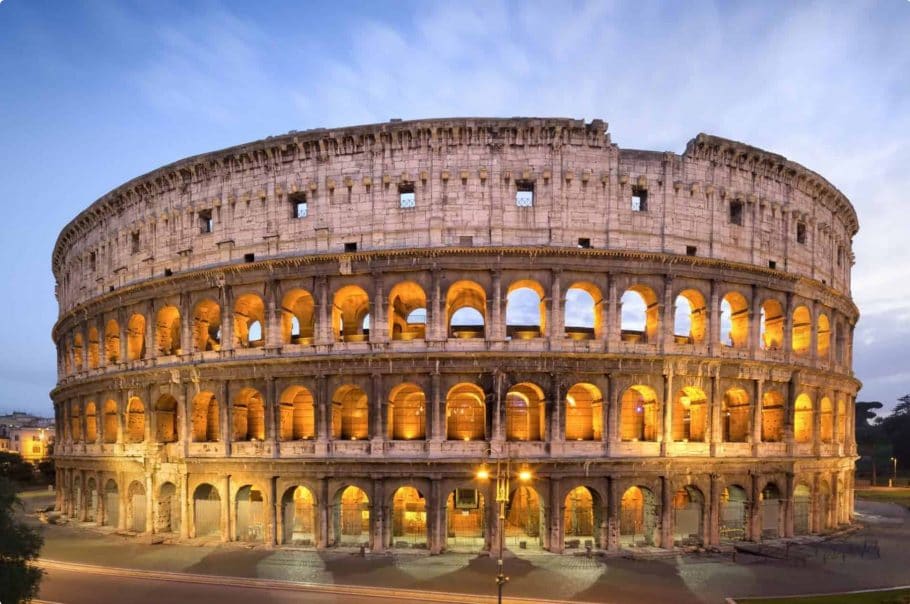
The Pantheon
Originally built between the first centuries BC and AD during the reign of Caesar, and later rebuilt by Emperor Hadrian in the following century, the Pantheon is arguably the most well preserved and enduring structure dating back to the time of the Roman Empire. The original purpose of the Pantheon is unknown, though it is thought most likely to be a temple, it was subsequently converted into a church in the 7th century, coming to be known as the church of ‘St Mary and the Matyrs’. The Pantheon features an enormous dome ceiling, with a circular hole for light at its centre, this colossal dome remained the largest in the world for 1300 years, and is still the largest unsupported dome in existence with a diameter of roughly 43 meters. The Pantheon is also the resting place for a number of historical figures, such as members of the Italian monarchy, and the famous renaissance painter Raphael. The survival of the Pantheon to this day is a fortunate anomaly when compared with many other famous structures and monuments from the ancient era, with its conversion to a church likely playing a major role in its preservation throughout the ensuing ages. Today, the Pantheon can be seen in Central Rome, being open for tourists to walk through at their leisure, and is an ideal stop on any walking tour.
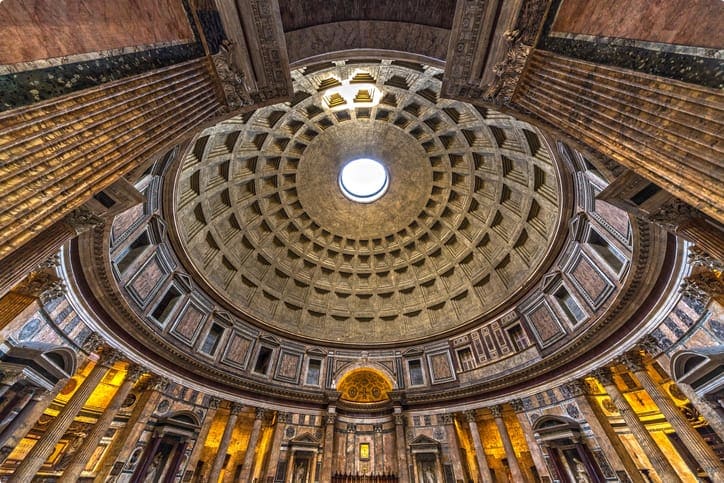
Villa Borghese
Located on the Princian hill, the Villa Borghese is an art gallery surrounded by large gardens, once the property of 17th Century Italian Cardinal Scipione Borghese. Scipione was an avid patron of the arts, featuring a collection full of renaissance greats, with a particular emphasis of the works of Caravaggio. The collection features a number of Caravaggio’s greatest works, including ‘Saint Jerome Writing’, ‘Boy with a Basket of Fruit’, and ‘St John the Baptist’. The collection also houses a number of works by artists like Titian and Raphael, as well as sculptures from Bernini and Canova, and is one of the highlights of any tour to Rome. The Villa Borghese is among one of the most beautiful ways to spend an afternoon in Rome; with entrances located near the Piazza del Popolo, or near the top of the Spanish Steps. On your way to the gallery, be sure to take some time to explore the Villa Borghese gardens. Converted from a vineyard in the 17th century, and later remodelled in the 19th, they are among the city‘s most stunning sights, and a fantastic part of any walking tour.

Roman Forum
Situated between the Palatine, and Capitoline Hills, the Roman Forum was at the heart of ancient Roman life throughout the time of the Republic, with the ‘Comitium’ area in particular being the birthplace of Republicanism itself. During the era of the Roman Republic, the forum was the locus of both political and commercial life, with public speaking and criminal proceedings taking place here, as well as open air markets and shops dotting its way. Some of Rome’s most ancient buildings can be found around this area, dating back to the pre-republican era of the Roman kings around the 7th century BC. Following Rome’s turn to empire, the forum became more of a ceremonial site, characterised more by temples, as the centre of commercial life shifted to Trajan’s forum further to the north. Eventually the locus of political power shifted back to the forum around the 4th century AD, where it remained until the collapse of the Western Empire a couple of centuries later. The site of the Roman Forum suffered the depredation of scavenging, mining, and dumping throughout the ensuing years, with most of the buildings slowly falling away from these activities. The use of the site as a dumping ground contributed to a rising ground levels throughout the middle ages, while the scavenging of material for construction projects during the renaissance left what remained of the forum looking sparse and bare. Despite this, the site of the Roman Forum is still a must see, making an easy stop on a walking tour of central Rome, with the façade of the Temple of Saturn in particular marking out what once stood as the political heart of the Roman Republic.

Trevi Fountain
The Trevi fountain is another of Rome’s most recognisable landmarks, and is one of the most famous fountains in the world, often noted for its appearance in classic films such as ‘Roman Holiday‘ or ‘La Dolce Vita’. Originally, fountains such as the Trevi fountain were used in a purely functional capacity, being used by the families of the city as a supply of fresh drinking water, in Rome’s case often transported via aqueduct. The Trevi fountain was commissioned in the early 17th century by Pope Urban VIII, and began construction with famous architect Bernini, who was famed at the time for his works of sculpture. Despite Bernini beginning the work, it was a collection of four other artists who would design the sculptures, with Pietro Bracci’s ‘Oceanus’ standing at the centre. It is part of Roman tradition that a sip of water from the Trevi fountain will ensure a return trip to Rome, and that tossing a coin inside will ensure the trip is a safe one. In line with this tradition, you can find clean water for sale by the side of the fountain, and feel free to toss a coin inside, around 3,000 euros every day are collected for local charity.
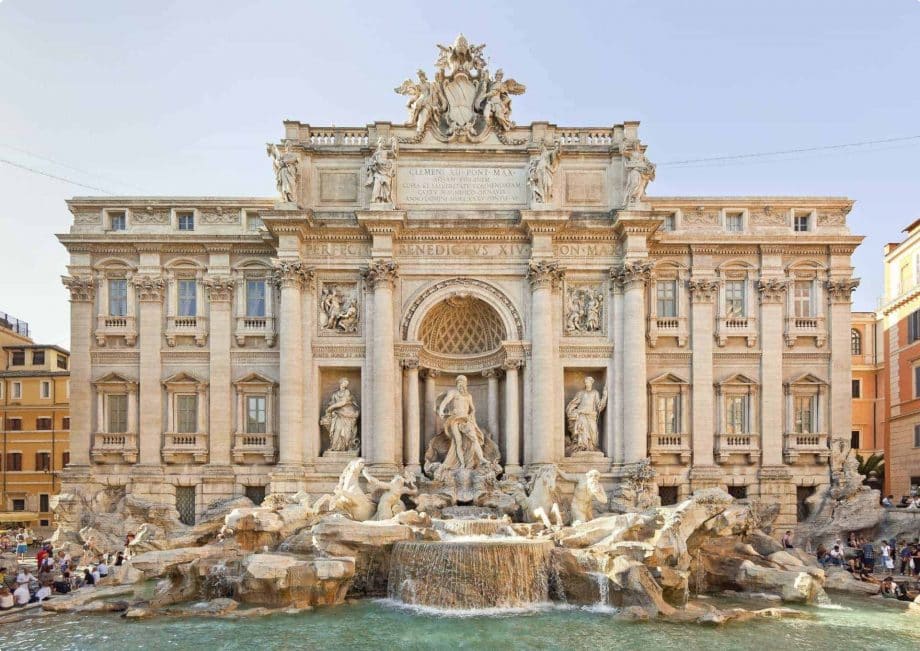
Spanish Steps
Constructed in the 18th century from funds bequeathed by French diplomat Étienne Gueffier, the Spanish Steps connect the Trinità dei Monti Church, and the Spanish Embassy at the top with the Holy see in the square below. The Spanish Steps lie in the centre of the Piazza di Spagna, or ‘Spanish Place’, named for the presence of the Spanish Embassy at the top of the stairs; it is from this that the Spanish Steps derive their name. The stairs are a popular meeting place in Rome, and were made further popular after the film ‘Roman Holiday‘, where Audrey Hepburn and Gregory Peck meet by chance at the Spanish steps. Depending on which season you find yourself in Rome, the steps may even have seasonal decoration, in Spring the steps are decorated with pink azaleas for a month, while around Christmas, a 19th century crib is displayed at the base of the stairs.
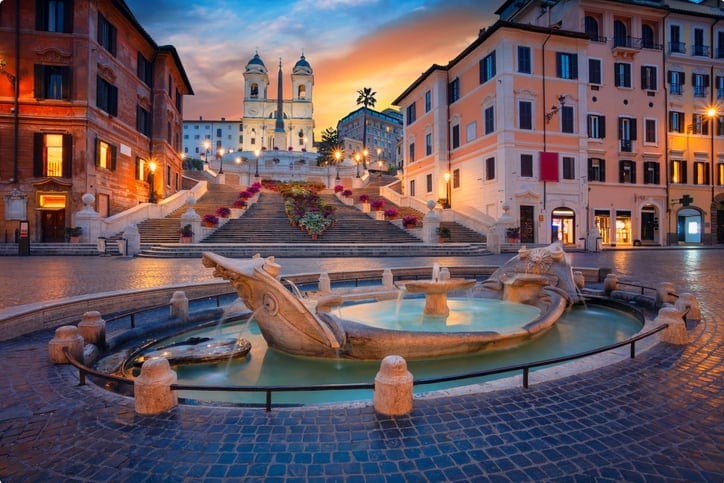
Articles

Day trips from Milan to Lake Como, Bergamo and more.
Venture further from Milan and explore the beautiful Lake Como and Lake Maggiore or visit Parma and learn more about their famous Parma ham and Parmesan cheese. Take advantage of Italy's great rail network and get to know the local nearby towns and people.
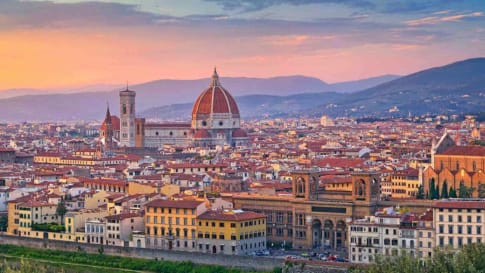
History of a City: Florence, Italy
Florence or Firenze, article provides an overview of the history from inception from the Romans to Mussolini with plenty of the Renaissance covered. Includes a list of Museums and places to see in Tuscany. Background material for a small group package tour to Italy or long stay in Florence.
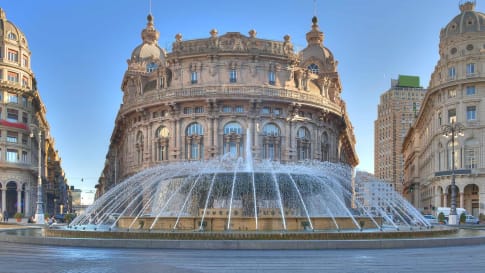
History of Genoa, Rival to Venice
In this article, we will look at the history of Genoa, and its rivalry with Venice that led to several wars fought between the two city-states in the 12th to 14th centuries.

Italian Renaissance Families: The Medicis
This blog is part of a series on five influential Italian Renaissance families that shaped Italy, especially during the fifteenth and sixteenth centuries. It is based on both our Italian Renaissance Summer School course, and…
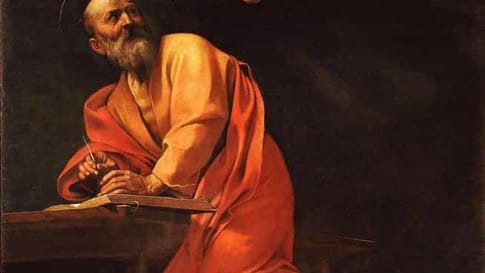
Learning about Caravaggio's Paintings: The Definitive Guide for Seniors
Caravaggio’s Paintings Michelangelo Merisi da Caravaggio (1571-1610) was a leading 16th century Italian painter whose short but tempestuous life rivalled the controversy and drama he created through his highly influential art. Born in Lombardy, northern…
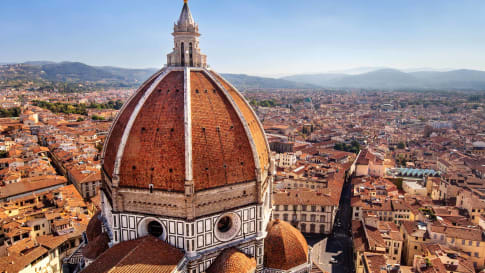
Questions about Italy
Escorted small group tours for mature and senior travellers to Italy. Designed for couples and solo travellers who like to explore and enjoy learning as they travel to Rome, Florence, Genoa, Venice, Naples, Sicily or Lake Garda and beyond.
Odyssey's Tours to Italy
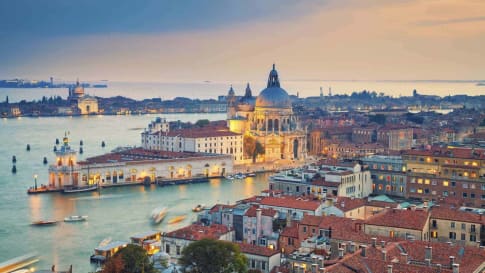
18 days
Aug, SepArt and History of Italy | Small Group Tour for seniors
Visiting Italy
Taken as a whole, Italian Civilization (which includes, of course, the splendid inheritance of Ancient Rome) is absolutely foundational to Western culture. Music, Painting, Sculpture, Architecture, Literature, Philosophy, Law and Politics all derive from Italy or were adapted and transformed through the medium of Italy.
From A$16,695 AUD
View Tour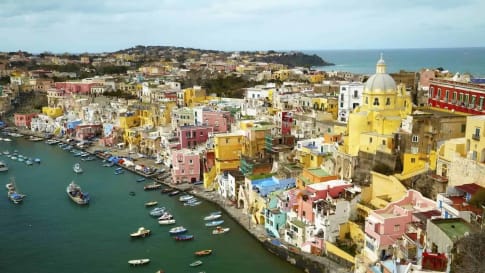
22 days
Jan, Apr, SepAncient History of Southern Italy & Sicily group tours
Visiting Italy
Our program for senior travellers, as well as featuring the rugged countryside of Southern Italy, also encompasses learning about the many civilisations that have shaped this land. We learn about the influence of the early Phoenicians, Greeks, Romans, Byzantines, Saracens, and Aragonese.
From A$16,995 AUD
View Tour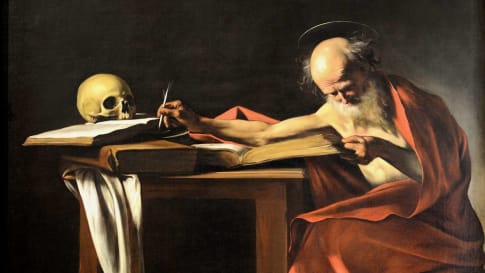
20 days
May, OctCaravaggio’s Journey | Small Group Tour in Italy
Visiting Italy, Malta
On this small group tour of Italy and Malta for mature and senior couples and solo travellers we trace the life of Caravaggio, exploring the artistic works he left behind and the tumultuous life he led. We follow him from his birthplace in Milan to Rome, Malta, Sicily and Naples. In each place he lived Caravaggio left behind a rich legacy of art for us to admire.
From A$15,125 AUD
View Tour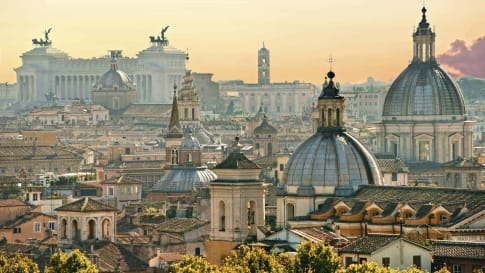
15 days
DecDiscover Rome | Cultural and History Small Group Tour for Seniors
Visiting Italy
Rome is arguably the most fascinating city in Italy, the capital city, once the centre of a vast, ancient empire and still today a cultural focus within Europe. Explore the city in-depth as part of a small group program spending 15 days exploring, just Rome and Roman History.
From A$9,235 AUD
View Tour
27 days
DecEuropean Cities Small Group History and Cultural Winter Tour
Visiting Albania, Croatia
An escorted tour A Journey that commences in Rome and takes in 12 destinations along its journey to Athens. This is an off season small group journey with like minded people. A small group tour across Southern Europe with local guides sharing authentic in-country authentic experiences for mature couples and solo travellers.
From A$17,295 AUD
View Tour
22 days
Mar, Sep, MayFlorence: Living in a Renaissance City
Visiting Italy
A small group tour with like minded people, couples or solo travellers, that is based in Florence. An authentic experience of living in this Renaissance city The daily itineraries draw on local guides to share their knowledge on this unique European tour. Trips to Vinci, Sienna and San Gimignano are included.
From A$14,375 AUD
View Tour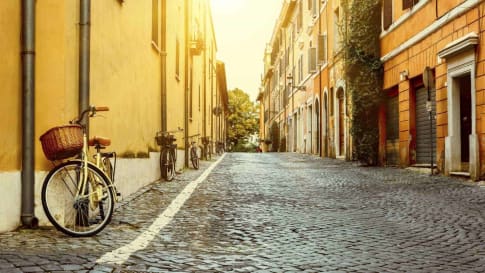
22 days
Sep, Apr, MarHeritage, Culture and History of Italy | Small Group Tours for Seniors
Visiting Italy
Rome, the world’s first superpower, lasted for almost a thousand years. In this small group tour for senior couples and solo travellers we thread our way through the Rome of the Emperors, then through the Italy of the Renaissance, Michelangelo, the Medici, and the Borgia. In the south, we visit the cosmopolitan city of Naples as well as Pompeii and the island retreat of Capri.
From A$13,695 AUD
View Tour
11 days
Sep, MayHeritage, culture, history of Italy, seniors small group - Short Tour
Visiting Italy
Odyssey's small group tour features the best of the Italian countryside as well as the great cities and icons of Italy. We will see the Renaissance cities of Florence, Pisa, and Lucca as well as the Umbrian medieval cities of Perugia.
From A$8,195 AUD
View Tour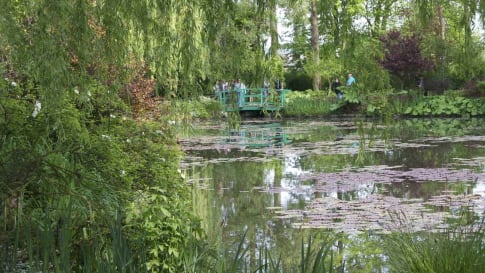
25 days
Aug, May, SepItaly and France, history of gardens small group escorted tour
Visiting France, Italy
Odyssey's small group tour explores some of the classic gardens of Italy and France that reflect changing fashions and garden designs throughout the ages. This fully escorted tour features an Odyssey Program Leader and a handful of local guides who will examine, discuss, compare and contrast the cultural and temporal similarities and diversities between the gardens of Italy and France and the historical influences on their design.
From A$17,595 AUD
View Tour
20 days
JulItaly Puccini Festival small group Tour
Visiting Italy
The Puccini festival is an escorted tour complete with local guides as part of our small group travel program, we will also visit Rome, Siena, Florence, Lucca, Viareggio, Genoa, Milan, Verona, and Venice. Join like minded people on this European tour in Italy. For solo travellers there is a nominal single supplement charged.
From A$15,995 AUD
View Tour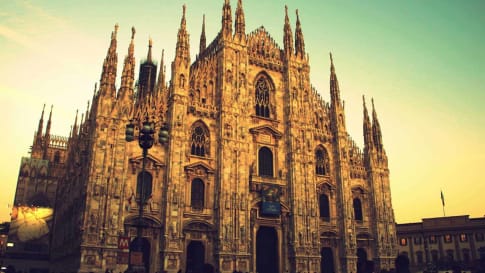
14 days
Sep, MayLakes and Landscapes of Northern Italy | Short Small Group Tour for Seniors
Visiting Italy
Our small group tour begins in the cosmopolitan city of Milan and ventures to 2 of the region's lakes - Garda and Maggiore. Our tour uncovers a wealth of natural beauty, castles, serene waters, snow-capped mountains, and breathtaking scenery.
From A$9,225 AUD
View Tour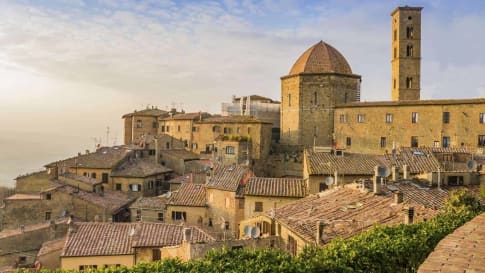
26 days
Aug, SepVillages of Italy | small group tours Italy
Visiting Italy
Explore Italy in a small group tour. Italy is the most Mediterranean of nations and as mature and aged as many of its red wines. In terms of being a nation, it is even younger than New Zealand. This is often hard to believe, bearing in mind that Italy gave rise to Europe’s first global empire, which endured for approximately 2,000 years, the Romans. The new constantly brushes with the old and in doing so generates sparks that makes any sojourn in Italy a deeply textured experience.
From A$16,775 AUD
View Tour
13 days
AugVillages of Italy - short small group tours
Visiting Italy
Roam the villages of the northern Dolomites, in Italy, home to more than 40 glaciers. A small group tour is a great way to get to know Italy, or reacquaint yourself with its beauty and hidden gems. Travel with like minded mature couples or solo travellers.
From A$10,895 AUD
View Tour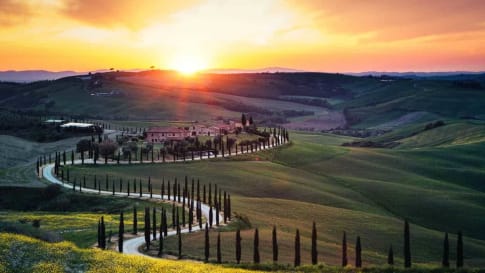
17 days
Sep, AugVia di Francesco Walking Tour | Small Group Walking Tours Italy
Visiting Italy
Experience with like minded people a small group journey walking Via di Francesco (or the Way of St. Francis) in Italy. One of a few European tour companies who offer a tour leader and local guides for senior couples and single travellers on this journey between the key destinations on this walk.
From A$12,050 AUD
View Tour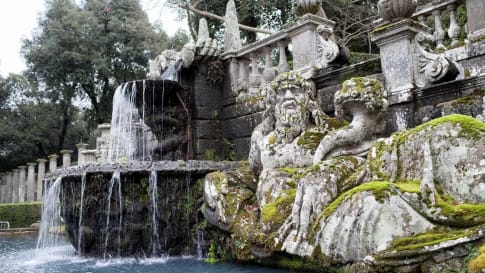
18 days
Apr, Sep, MarVia Francigena Walking Tour: Great St. Bernard Pass to Rome
Visiting Italy, Switzerland
An escorted tour that walks sections of the ancient pilgrimage route Via Francigena. Our small group is joined by Local guides to share knowledge and authentic experiences as our group of like minded people make their way to Rome.
From A$13,250 AUD
View Tour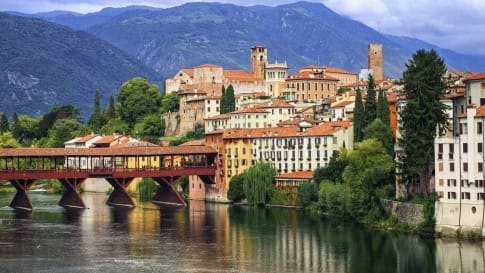
22 days
Oct, AprTour of Northern Italy's Lakes and Alps
Visiting Italy
A European tour to the stunning Lakes Region of Italy. Your travel experience begins in Milan, daily itineraries include two of the region’s lakes - Garda and Maggiore, plus the Roman villa Desenzona and a day in Cinque Terre. Local guides share experience and knowledge with you on this escorted small group tour for couples and solo travelers.
From A$14,895 AUD
View Tour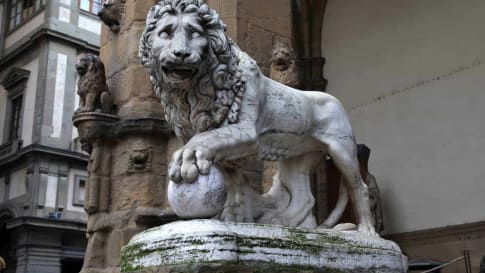
21 days
Apr, Aug, MayRenaissance Italy Tour: Story of Five Families
Visiting Italy
Explore Renaissance Italy on this small group tour though an examination of five significant city states. Florence, Urbino, Ferrara, Mantua and Milan were all dominated by families determined to increase the status of their city through art and architecture. Spend time coming to know the men and women who helped create the cities, as well as the magnificent legacy they left behind.
From A$14,295 AUD
View Tour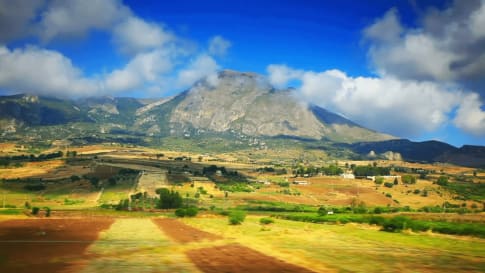
25 days
Apr, Sep, OctMediterranean Islands Small Group Tour | Malta, Sicily, Sardinia and Corsica
Visiting Corsica, Italy
For centuries Malta, Sicily, Sardinia and Corsica held the key to the Mediterranean. Unlike other European tour companies, Odyssey provides a tour leader and local guides to share detailed itineraries about the destinations on these small group journeys. This escorted tour of western Mediterranean explores the geography, history, culture and peoples of these 4 islands. Small group tour for mature couples and solo travellers. A reasonable single supplement is charged.
From A$19,750 AUD
View Tour
12 days
Apr, Oct, SepMalta & Sicily - Mediterranean Islands small group tour
Visiting Italy, Malta
For centuries Malta & Sicily, held the key to the Mediterranean. Unlike other European tour companies, Odyssey provides a tour leader and local guides to share detailed itineraries about the destinations on these small group journeys. For mature couples and solo travellers. A reasonable single supplement is charged.
From A$10,150 AUD
View Tour
